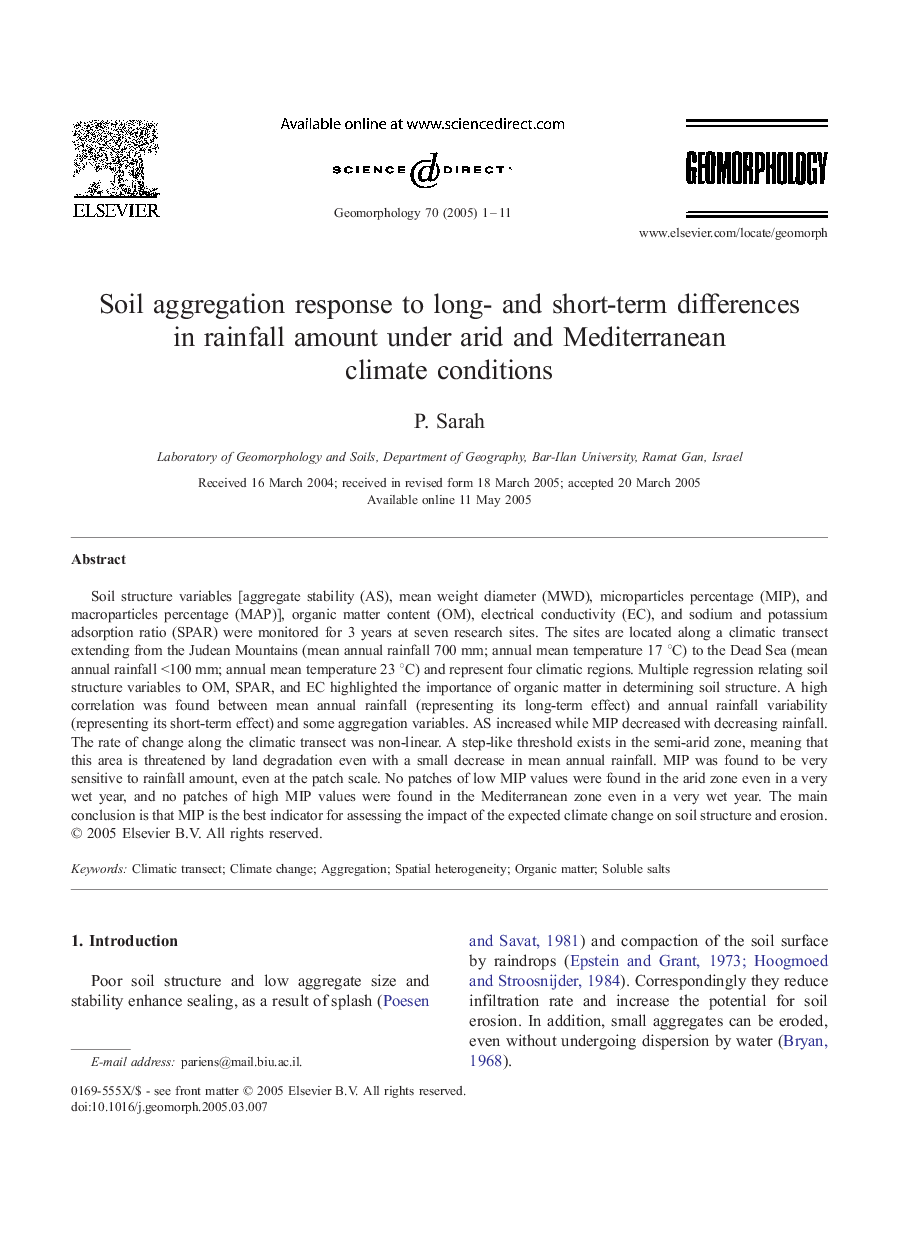| Article ID | Journal | Published Year | Pages | File Type |
|---|---|---|---|---|
| 9524847 | Geomorphology | 2005 | 11 Pages |
Abstract
Soil structure variables [aggregate stability (AS), mean weight diameter (MWD), microparticles percentage (MIP), and macroparticles percentage (MAP)], organic matter content (OM), electrical conductivity (EC), and sodium and potassium adsorption ratio (SPAR) were monitored for 3 years at seven research sites. The sites are located along a climatic transect extending from the Judean Mountains (mean annual rainfall 700 mm; annual mean temperature 17 °C) to the Dead Sea (mean annual rainfall <100 mm; annual mean temperature 23 °C) and represent four climatic regions. Multiple regression relating soil structure variables to OM, SPAR, and EC highlighted the importance of organic matter in determining soil structure. A high correlation was found between mean annual rainfall (representing its long-term effect) and annual rainfall variability (representing its short-term effect) and some aggregation variables. AS increased while MIP decreased with decreasing rainfall. The rate of change along the climatic transect was non-linear. A step-like threshold exists in the semi-arid zone, meaning that this area is threatened by land degradation even with a small decrease in mean annual rainfall. MIP was found to be very sensitive to rainfall amount, even at the patch scale. No patches of low MIP values were found in the arid zone even in a very wet year, and no patches of high MIP values were found in the Mediterranean zone even in a very wet year. The main conclusion is that MIP is the best indicator for assessing the impact of the expected climate change on soil structure and erosion.
Related Topics
Physical Sciences and Engineering
Earth and Planetary Sciences
Earth-Surface Processes
Authors
P. Sarah,
